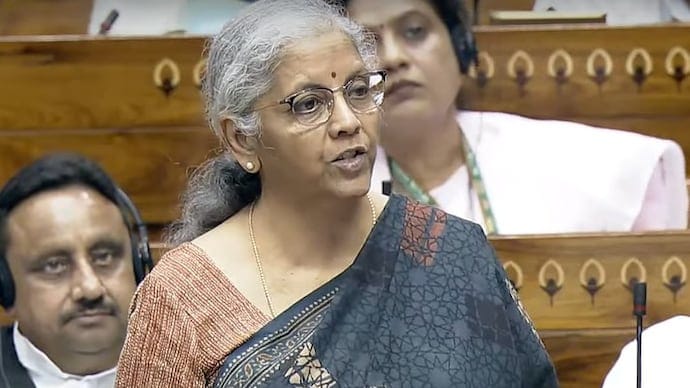The Economic Survey 2023-24 that was released by the Ministry of Finance on Monday projected a real GDP growth of 6.5-7% for the financial year 2024-25 (FY25).
“The Survey conservatively projects a real GDP growth of 6.5–7 per cent, with risks evenly balanced, cognisant of the fact that the market expectations are on the higher side,” said the Economic Survey 2023-24.
The Economic Survey mentioned that the economy’s outlook is bright and has carried forward the momentum it built in FY23 into FY24.
Finance Minister Nirmala Sitharaman presents the Economic Survey in Lok Sabha on Monday.
GDP growth projected at 6.5-7% for FY25
Unemployment rate decreasing post-pandemic
Female labour force participation rising since 2017-18
The Economic Survey 2023-24 that was released by the Ministry of Finance on Monday projected a real GDP growth of 6.5-7% for the financial year 2024-25 (FY25).
“The Survey conservatively projects a real GDP growth of 6.5–7 per cent, with risks evenly balanced, cognisant of the fact that the market expectations are on the higher side,” said the Economic Survey 2023-24.
The Economic Survey mentioned that the economy’s outlook is bright and has carried forward the momentum it built in FY23 into FY24.
“India’s economy carried forward the momentum it built in FY23 into FY24 despite a gamut of global and external challenges. The focus on maintaining macroeconomic stability ensured that these challenges had minimal impact on India’s economy,” said the survey.
“As a result, India’s real GDP grew by 8.2 per cent in FY24, posting growth of over 7 per cent for a third consecutive year, driven by stable consumption demand and steadily improving investment demand. On the supply side, gross value added (GVA) at 2011-12 prices grew by 7.2 per cent in FY24, with growth remaining broad-based. Net taxes at constant (2011-12) prices grew by 19.1 per cent in FY24, aided by reasonably strong tax growth, both at the centre and state levels and rationalisation of subsidy expenditure. This led to the difference between GDP and GVA growth in FY24,” said the Economic Survey 2023-24.
Economic Survey on employment
The survey also mentioned that the annual unemployment rate in India has been decreasing.
According to the annual Periodic Labour Force Survey (PLFS), the unemployment rate for individuals aged 15 and above has been falling since the pandemic.
This trend is accompanied by an increase in the labour force participation rate and the worker-to-population ratio. Even under the stricter current weekly status, employment levels have rebounded in both urban and rural areas following the pandemic.
“From the gender perspective, the female labour force participation rate has been rising for six years, i.e., from 23.3 per cent in 2017-18 to 37 per cent in 2022-23, driven mainly by the rising participation of rural women,” said the Economic Survey.
Economic Survey on inflation
The Economic Survey said that as supply chain disruptions lessened and the energy and food price spikes caused by the Russia-Ukraine conflict subsided, overall inflation rates fell in many countries.
After reaching its highest point in 2022, inflation significantly decreased throughout 2023. Despite this improvement, inflation remains above target levels in several nations. The reduction in supply chain pressures for tradeable goods in 2023 contributed to a notable decrease in goods inflation, easing logistical issues.
“The easing of supply-chain pressures in tradeable goods in 2023 led to sharp decline in goods inflation in various countries, reducing logistic challenges. Core inflation remained sticky on account of services inflation and a strong labour market, especially in most AEs,” it said.
👉 Click here to read the latest Gujarat news on TheLiveAhmedabad.com




